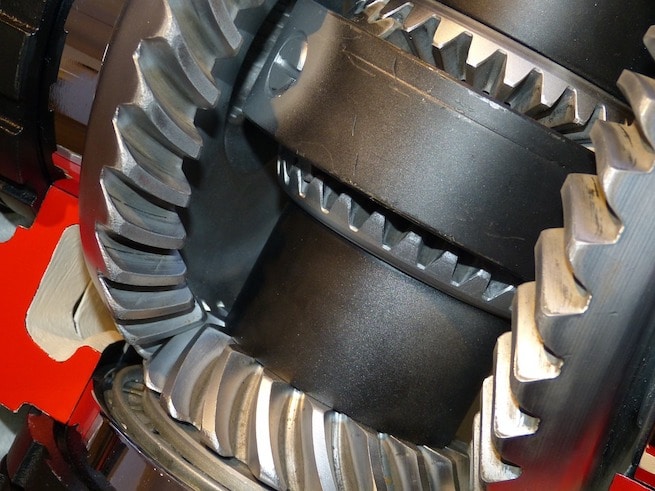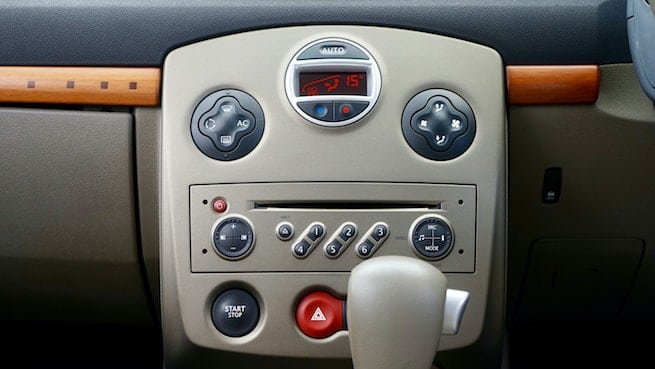What Does Overdrive Do? [Ultimate Overdrive or OD Guide]
The engines and transmissions of modern cars are engineered to deliver maximum power at a range of speeds to the drive wheels of your car. Your transmission shifts through several gears as the speed and RPM increase.
Usually, the maximum speed is when the engine is revolving at the highest RPM in the top gear of the transmission. While you are going fast, fuel economy takes a nosedive. So, what does overdrive do?
Cars equipped with overdrive gearing in automatic and manual transmissions allow cars to operate at lower engine speeds while traveling at the same highway speed. Better fuel economy is usually achieved, and also reducing wear and tear on the components of the car.
However, acceleration capabilities are lower. For example, if you need to pass someone, drivers will drop out of overdrive by pressing the overdrive button, increase the RPM and accelerate past the vehicle and then drop back into overdrive to maintain fuel economy.
What Is Overdrive? And, What Does Overdrive Do?
The term overdrive comes from older vehicles which would have a separate gearbox on the side of the transmission connected to the driveshaft, which functioned to provide overdrive system capabilities.
Today modern cars have incorporated overdrive functions into transmissions for manual cars as well as most automatic cars.
Readers can think of overdrive as an extra gear in the transmission connected to the driveshaft while running the engine at lower RPM. Availability, gear ratios, number of gears, etc. vary by manufacturer.
When the overdrive is off, the transmission is limited to shifting amongst the lower gears. Once overdrive is engaged, the transmission can take advantage of the higher gears, causing the engine to run at a lower RPM and reduce fuel usage.
Typically, overdrive should be engaged at speeds over 40 to 45 miles per hour, however always check your car manual for specific instructions. Avoid engaging the overdrive at low speeds. Think of overdrive as your cruising gear on the highway.
How Do I Use the Overdrive More Effectively?
As with all technologies, there are effective ways to use technology to obtain maximum benefit and also protect your investment. A car equipped with an overdrive transmission is no different.
Overdrive transmissions are designed to deliver maximum fuel efficiency, i.e., low engine RPM while traveling at highway speeds for both front wheel drive and rear wheel drive vehicles.
Towing a trailer or climbing a steep grade places a lot of extra stress on the overdrive unit. Drivers may find road speed declining, and the transmission cycling between overdrive and the next gear. This latter phenomenon is called “hunting.”
Drivers should switch the overdrive off if hunting occurs to help maintain road speed, increase RPM, and maintain power levels to the transmission. Drivers also find that switching off the overdrive unit while descending a grade allows for better engine braking performance.
Which vehicles have overdrive Automatic or manual?

Many new vehicles come with overdrive today due to the fuel efficiencies overdrive offers. Whenever the gear ratio for the highest gear is less than 1:1, it is usually the overdrive gear. In many cars, overdrive can be switched on or off with the press of a button.
Many automatic transmissions come with overdrive, and no action needs to be taken by the driver to utilize this gear at highway speeds. Discuss this feature with the dealer whenever purchasing a car.
Drivers will notice their engines RPM will be quite low at highway speeds. Just enough power is needed to maintain highway speeds. Whenever drivers need to pass another car or climb a grade, the overdrive transmission slips into a lower gear, and engine RPM increases to deliver more power.
When should you use the overdrive?
Typically, drivers should use overdrive whenever they are cruising at speeds above 40 miles per hour. Below those speeds, the engine is not designed to deliver sufficient power and torque to maintain road speed.
Highway driving at speeds above 40 miles per hour in overdrive delivers maximum fuel efficiency. Anytime you need to accelerate, climb a grade, or tow a heavy trailer, drivers should switch off the overdrive feature to ensure that the engine can deliver sufficient power, and the transmission is not overloaded.
Drivers should also switch off the overdrive unit when descending a steep grade where you require engine braking. Some tiptronic transmissions allows forward gear shifting using your fingers on the input shaft paddles behind the steering wheels.
This feature allows the transmission to be electrically operated, and it improves the cars performance speed by allowing the owners to shift gears with ease.
F.A.Q.
Can you drive with an overdrive car all the time?
The straight answer is “No.” Overdrive should only be used at speeds above 40 miles per hour. Refer to the owner’s manual for specific recommendations for your make and model of vehicle.
Many new vehicles come with overdrive automatic transmissions that shift into overdrive whenever conditions indicate overdrive can be utilized. Operators with manual vs. automatic car overdrive transmissions must downshift or switch the overdrive unit off when not needed.
The overdrive unit or gear is designed to deliver improved fuel efficiency. The engine can deliver sufficient power to maintain highway speeds in the majority of situations. As mentioned previously, switch off the unit when climbing grades, towing trailers or if engine braking is required.
When should the overdrive be turned off?
Driving your vehicle in overdrive can cause damage to the transmission. Typically, drivers who are navigating city streets may never utilize overdrive capabilities. City speed limits are usually under 40 miles an hour, and there are many starts and stops.
Most drivers will routinely switch the overdrive unit off and only use it when they are planning to enter a highway where speed limits are above 40 miles per hour, and fuel efficiency can be improved. Leaving your unit off, avoids any potential damage to the engine, the transmission and overdrive from the transmission hunting from overdrive to a lower gear and back.
Can the overdrive cause damages if used incorrectly?
The engine applies torque to the transmission, which in turn applies torque to the drive shaft from the output shaft of the transmission in rear-wheel drive vehicles. Lower gears allow more power to be transferred to the driveshaft to take the car from a standstill to cruising speed. Overdrive allows for sufficient power transfer to maintain speeds at low engine RPM.
- Driving Tips – Avoid towing heavy loads and avoid climbing grades, which require more power and torque levels. These situations can generate heat in the transmission as well as cause the transmission to cycle back and forth from overdrive to a lower gear. Avoid engaging the overdrive at lower speeds.
- If you have a three-speed transmission with overdrive, turning the overdrive unit off effectively makes your transmission a three-speed transmission. The overdrive is the fourth gear in this situation.
- Both cycling and the excessive heat can damage the transmission and may trigger trouble codes to be generated by the engine control module, causing the check engine light to illuminate.
- Avoid using overdrive as mentioned above and also when engine braking is required while descending a long grade. If you suspect the transmission oil has overheated, consider a transmission oil change the next time you have an engine oil change.
Does the overdrive affect fuel performance when it is turned on?

The primary purpose of overdrive units is to reduce engine wear and improve your cars fuel performance. The engine RPM is lower while the transmission is on overdrive.
Plu, the engine-transmission combination has been designed to deliver maximum fuel efficiency at highway speeds while the transmission is in overdrive. The car engine RPM is lower and delivers sufficient power to the transmission to maintain highway speeds.
Setting your cruise control at the desired speed while the overdrive unit is engaged and in final drive gear, delivers the maximum fuel efficiency possible.
The manufacturer’s manual may include information regarding the most efficient cruising speeds for your vehicle and the use of overdrive capabilities to save fuel.
Try to drive your vehicle with the standard settings to achieve better fuel performance and avoid frequent car repair visits. In every car talk the word overdrive plays an important role. There’s a great debate in the automotive industry about which transmission type (overdrive or direct drive) performs the best.
Some experts claim that the direct drive has better efficiency over the overdrive transmission. Try to not to overuse the overdrive feature while driving an automatic transmission car to avoid high replacement cost in the future.
Overdrive Summary
Manufacturers include overdrive capability in their cars as a means of improving fuel economy. Overdrive works well at speeds over 40 miles per hour.
Drivers should avoid using the overdrive gear when towing a trailer, climbing grades, or while descending steep grades and using the engine to brake the vehicle. The transmission may overheat in any of these situations, causing damage to components.
Most drivers will switch off the overdrive capability for day to day city driving since higher torque is required for many start and stop situations found in city driving. Used properly, overdrive capabilities can significantly reduce fuel consumption during highway driving.
Last Updated on: October 22, 2024

